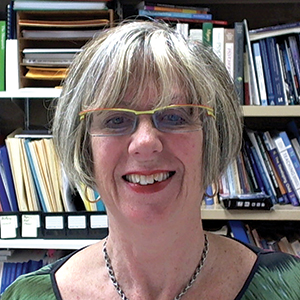Any shockwaves the song created were quickly assuaged when the group cut a version renamed Let’s Talk About AIDS and played their part in the burgeoning safe sex campaigns of the era.
But no-one imagined a world where pornography would explode into a multi-billion dollar industry, available at your fingertips, through a lightweight pocket-sized telephone connected in real time to anyone on the planet.
Nor did they contemplate that kids would soon be texting about sex and having to face the criminal consequences.
With the birth of the internet, the quick evolution of the World Wide Web and the advent of smartphones, hard porn moved from closed wrap magazines and videos on the counters of specialist sex shops, to an ubiquitous online stream, accessible to anyone who declares they are over 18. That exposure, according to US research, represents 51 per cent of boys and 32 per cent of girls aged 12 years and younger.
Any notion that prohibition, strict controls and surveillance can somehow stem the tide of information is unrealistic – technology has made porn one of the biggest businesses in the world.
Interestingly though, new research from UniSA is showing quite clearly that information available online is by no means a trusted source for school kids.
One of the biggest surprises for researchers was that about 70 per cent of school students really valued sex education classes at school. The only source of information about sexuality and relationships they found more credible was their mother.
 UniSA education specialist, Emeritus Professor Bruce Johnson says in the information age, sexuality and relationship education in schools is more important than ever.
UniSA education specialist, Emeritus Professor Bruce Johnson says in the information age, sexuality and relationship education in schools is more important than ever.
“Through our research, for the first time we’re getting an idea of what young people want to learn about and also what they feel about what they have been taught so far,” Prof Johnson says.
“What we have learned is that young people already know a fair bit about human biology and the mechanics of sex and they don’t want to cover that same ground again and again. There is a brave new world of sex and relationships out there and they want to know how to make their way in that world with the goal of having good and satisfying relationships.
“And yes, they also want to know about pornography, not, we think so they can access it, but to have better skills to navigate it and apply reality checks on what is out there.”
Prof Johnson says he believes adults all too often underestimate young people and their capacity to be discerning.
Stage one of the research being carried out by Prof Johnson and colleagues at Deakin and Sussex Universities, which included a comprehensive survey of more than 2000 state high school students in South Australia and Victoria, is part of a wider Australian Research Council funded project, Engaging Young People in Sexuality Education.
Overall, the survey found that 77 per cent of girls and 74 per cent of boys cited school sex education programs as their number one source of information about sexuality and relationships, with friends coming in as their second most likely source.
Girls wanted to learn more about gender diversity (52 per cent), violence in relationships (54 per cent), staying safe online and ending a relationship, while boys wanted more information on how to have sex (38 per cent), sexual pleasure (38 per cent), different sexual acts, masturbation and pornography.
However, both boys and girls said they wanted to know more about love and starting a relationship.
In the next phase of the research, Prof Johnson and his team will talk to young people about interpreting the data to bring depth to the research and sort out any contradictions or inconsistences.
“Children are not a blank canvas – we can’t approach sexuality education as something we simply roll out for students,” he says. “We need to understand that they already have ideas, questions, views and feelings that need to be heard and considered.
“What we must accept, as adults, as teachers, leaders, parents and politicians, is that in a world where knowledge and information have never been more freely available, young people and children already have a lot of information about sex, sexuality and relationships. That can be challenging for some people but we can’t ignore it or pretend it isn’t so.”
And in the case of the modern phenomenon of sexting – the sending and receiving of explicit sexual messages by mobile phone – ignorance is far from bliss for young people.
Under the law as it stands in South Australia, even seemingly private sexual flirtations between teens who are in a relationship can turn out to be a legal or indeed a reputational minefield.
A 16-year-old who sends an explicit image of themselves to their boyfriend or girlfriend of the same age is breaking the law. Technically these images can be considered as child pornography and it is those laws that kick in, making it possible for convicted teens to be registered on the Australian Sex Offender Register.
 While common sense mostly prevails when prosecuting such cases, UniSA’s cyber bullying expert Dr Barbara Spears, says it is clear the law has not caught up with the social realities of teen relationships in the online era.
While common sense mostly prevails when prosecuting such cases, UniSA’s cyber bullying expert Dr Barbara Spears, says it is clear the law has not caught up with the social realities of teen relationships in the online era.
A recent report Cyberbullying, Sexting and the Law commissioned by the South Australian State Minister for Education and Children’s Services and led by Dr Spears with colleagues from Flinders University, has outlined the realities and risks around sexting.
“People are confused about the laws around sexting and in many instances completely unaware that they may be breaking the law,” Dr Spears says.
“Overall there is just not enough education about sexting – its prevalence, the legal consequences, the relationship between sexting and cyber bullying and the manifold consequences when things go wrong.”
And before you take a breath to say it is not something your children would ever do – only eight per cent of Australian parents even entertain the idea that their child might have received sexually explicit material and just three per cent can imagine they might send it – here are some salutary statistics quoted from the report.
Eighteen per cent of 16-17 year-olds reported they or one of their friends had received sexually suggestive, nude or nearly nude photos or videos of someone else.
Studies reported by the South Eastern Centre Against Sexual Assault in Monash, Victoria (SECASA 2013) found 48 per cent of teens have received sexually explicit messages, one in five Australian girls aged 18 has sent nude or semi-nude pictures of themselves over the internet, and 17 per cent of boys under 18 have sent sexual pictures of themselves to other people.
From 2008-2011 more than 450 child pornography charges had been laid in Australia against youths between the ages of 10 and 17, including 113 charges of “making child exploitation material”.
Perhaps most concerning is the fact that 88 per cent of self-generated “sexy” images have been collected and put on other sites.
Dr Spears says whole-of-community engagement with the issue is extremely important.
“We need to be aware of the impacts and consequences of sexting and not leave it up to one group – the ‘teachers’ or the ‘parents’ to take responsibility alone for how this is managed,” she says.
“Sexting in and of itself is not a cyberbullying act when it occurs between two consenting individuals, but when those images are shared and re-shared with and by others for the express purpose of harm, then it enters the cyberbullying/sexual bullying domain, with all the associated social, emotional, psychological, mental health and well-being impacts currently recognised.
“It also enters a legal domain, when images are used to blackmail, stalk or ruin others’ reputations.
“There’s a real need for a change to the current law in South Australia to bring it in line with the view that children should not be criminalised for consensual sexting with a similar aged peer.
“There is also an urgent need for clear, plain-speaking statements for parents, students, school leadership and staff regarding current State and Commonwealth law as it relates to bullying, cyberbullying, sexual bullying and sexting; and in relation to children and young people, as distinct from adults.”
At the end of the day, the technology is not going to disappear, 86 per cent of Australian teens aged between 14 and 17 have their own or access to a mobile phone and 57 per cent have a smartphone.
And neither will sex and pornography disappear.
So let’s talk about sex with young people so that they have a clearer understanding of what to expect, how to protect and accept themselves and their friends and how to form healthy relationships.
Connect with:
Barbara Spears @BarbaraASpears
School of Education @UniSAEducation
The Leadership, Teaching & Learning Research Group @EdResearchUniSA
Foundation for Young Australians @fya-org #safeschoolsdobetter